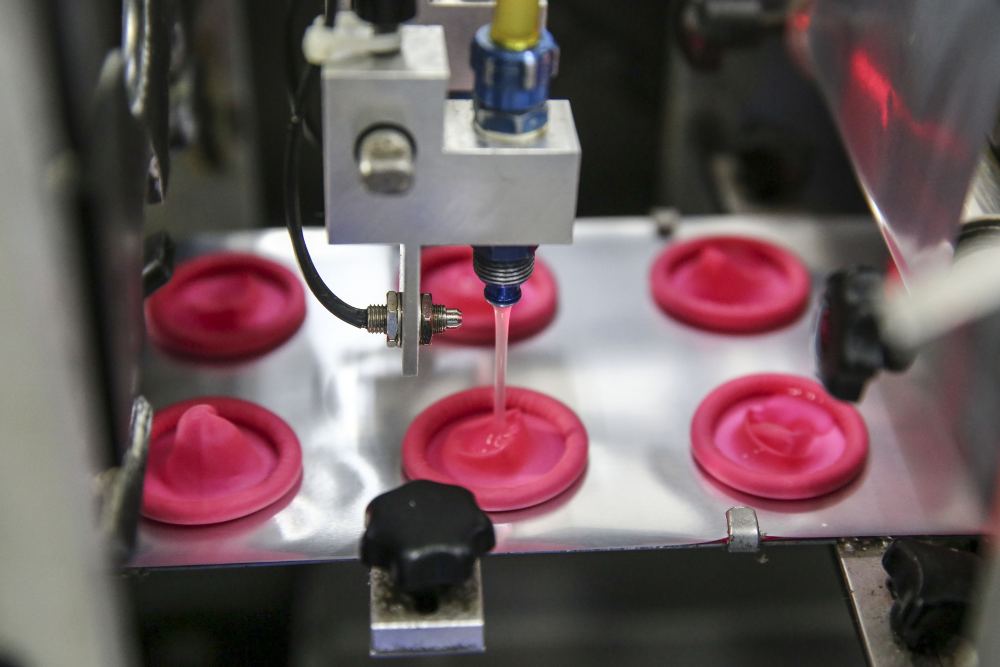KUALA LUMPUR, June 13 ― Condoms, thanks to the advancement of technology, come in various types.
You may be surprised to know that the world’s largest condom manufacturer with the production capacity of five billion condoms yearly is head-quartered in Port Klang, a 45-minute drive southwest of Kuala Lumpur.
Karex, which began as a small family business in 1988 in Johor, is now the global leader in condom and lubricant manufacturing with operations across Malaysia, Thailand, United States and United Kingdom.
Every day, the company produces millions of condom in dozens of varieties for broad range of clientele including governments, non-governmental organisations, brand owners and retailers in over 130 countries around the world.

Karex also has various brands under its portfolio which include Carex, ONE, Pasante and bespoke condom label called TheyFit.
They also have a whole menu of flavoured condom including teh tarik, durian and nasi lemak.
But have you ever wondered how does a giant condom-maker like Karex churn out millions of condoms every day to keep up with the global demand?
To better understand the processes, Karex granted Malay Mail access to see what goes on within the walls of its fascinating Klang factory, where about two million condoms are produced daily.
Clad in lab coat, disposable bouffant cap and shoe cover, we headed to the production line to check-out the thorough manufacturing procedure.
At Karex, there are four major steps to making latex condoms: dipping, testing, foiling and then packaging it to be shipped out all over the world.

Dipping
The process starts with a vat of milk-like latex and ammonia mix, which has a pretty strong and distinctive smell.
The ammonia is typically used to stop liquid latex from clotting.
To turn the liquid latex into rubbery condoms, a long row of cleaned cylindrical glass formers, which come in different sizes, are dipped into latex to get their first coating.
The formers are rotated to ensure the latex is evenly spread around the glass rods.
After the first coating, the formers will travel through a hot oven to dry out the latex.

It will then pass through a blower to cool down the first layer before they take a second trip through the vat for another dipping to make the condoms thicker and more durable.
Following the second dipping and drying process, the condoms will enter the beading station to form the bead.
They will then go through two leaching tanks to be free of excess protein and chemicals.
Finally, the condoms will be stripped out from the rods with water pressure before they all end up in the collecting tank.
Next, they will be washed, powdered with corn starch and dried in a specially-designed washing machine and a tumbler machine respectively.
Testing
Once the condoms are dried, it’s time to put them through their paces.
The stringent testing procedure at Karex is divided into two major categories to assess both the untested and tested condoms.
The goal is to reduce the chance of breakage and leakage to zero.
To do so, random samples from every two-hour batch is handpicked and triple-tested using different methods, including burst test, electrolyte test and water leak test.
The burst test involves filling a condom with air to bursting point to check the condom’s strength and elasticity.
According to international standards, each condom should be able to hold 18 liters of air before it bursts.
But, if it bursts before that, the condom is considered defective and further tests will be done on the batch.

Next, the sampled condoms will be put to the test using water and electricity.
The electrolyte test will check the condoms for any pinholes, defects or flaws.
Lastly, the remaining samples will be filled with water and squeezed around by human testers to visually inspect the condoms for signs of leaks.

Once the batch passes the tests, every single condom will be loaded onto an electronic mandrel machines to test them for pinholes and thin spots.
After that, the condoms will be rolled up and sorted into “accepted” and “rejected” buckets depending on the test result.

Just because Karex places customer’s safety a top priority, another batch of samples will be randomly selected from the tested condoms for additional round of testing.
This is to examine the mandrel machines’ efficiency.

Additionally, the factory also collects 900 retention samples from every lot (collective of several batches) daily to be kept at the company’s storeroom for five years.
Foiling and packaging
After the rigid quality testing, the condoms will be ready for packaging.

The rolled condoms will be manually placed on a conveyer belt to get a shot of lubrication and flavouring before it is sandwiched between two pieces of foils.
The sealed foil will then be cut into individual pieces and go into boxes, which comes in various shapes and sizes.






















